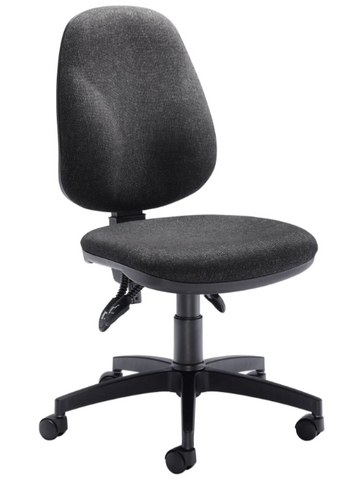0344 755 3018
0344 755 3018

In the diverse world of office ergonomics, the humble office chair stands tall as a critical piece of equipment. The right office chair not only supports posture but also dictates comfort levels, impacting productivity and well-being. This guide draws a comprehensive comparison between the draughting chair and the standard office chair, to allow you to make an informed decision on which one would suit you best.
Before delving into their nuances, it’s crucial to understand where these chairs come from and what they are primarily used for.
Draughting Chair: The draughting chair, with its heightened design, traces its origins to the rooms of architects and draughtsmen. In the age before CAD systems, these professionals needed chairs that could easily align with elevated drafting tables. Their unique height facilitated precision work on expansive blueprints.

Standard Office Chair: The journey of the standard office chair parallels the evolution of the modern office. As paperwork burgeoned and computer use became mainstream, there arose a need for a chair designed to cater to prolonged desk activities. Enter the standard office chair, tailored for conventional desk heights and regular office tasks.

Both chairs have evolved from their traditional uses to find a place in modern workspaces. Understanding their distinct features is the first step in making an informed decision.
Draughting Chair: This chair's standout feature is its adjustable height, accommodating tall work surfaces like standing desks or drafting tables. The integrated foot ring is another notable feature, providing a comfortable resting spot for feet during extended usage.
Standard Office Chair: Suited for the average office desk, these chairs offer height adjustments within a limited range, targeting the typical desk height of most office setups.
A thorough comparison necessitates an exploration of the advantages and potential shortcomings of both chair types.
Pros:
Cons:
Pros:
Cons:
With a market flooded with choices, highlighting key features can streamline the decision-making process.
In the end, the ideal choice hinges on your unique work environment and personal preferences. The draughting chair, with its adjustable height, is an excellent pick for those interacting with taller work surfaces. In contrast, the standard office chair remains the undisputed champion for conventional office setups.
By understanding the core differences and features of each chair type, you can invest wisely, ensuring comfort, enhanced productivity, and the well-being of your spine. So, fellow professionals, next time you’re in the market for a new office chair, reflect upon your workspace requirements and let this guide illuminate your path.